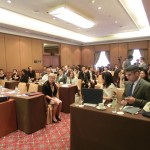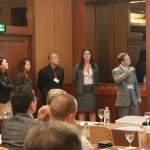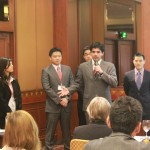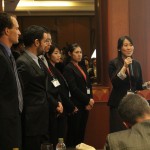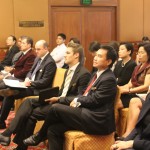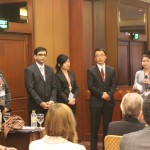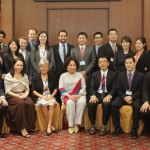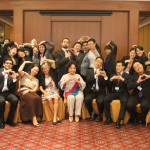Posted on behalf of Sam
Specialist clinics –
Thailand features a wide variety of medical clinics that specialize in nearly every form of medical treatment. Whether you are looking for cosmetic treatments, dental work, dermatology or anti-aging treatments, Thailand has numerous clinics located throughout the kingdom that feature state-of-the-art facilities and highly trained medical professionals that are ready to assist you with all of your medical needs.
Ancillary and wellness oriented business in Thailand –
Medical spas –
The ‘Medical Spa’ is a health, relaxation and rehabilitation centre which can help conditions from rheumatism, disc prolapse, to circulatory and nervous system problems, and the specialized clinics they have become have been developed in Thailand to the highest possible standards of care and attention to help visitors improve their health. Combining a holiday with a form of health treatment is the perfect way to recover health and wellbeing and to rejuvenate, invigorate and heal. Luxury spas and wellness retreats in Thailand were established for both health and deep relaxation and range from exclusive retreats happily accommodating global celebrities to beachside resorts that give yoga instruction overlooking the sea.
Thai culture has a longstanding tradition of massage and wellness techniques, and Thai massage is a centuries old practice that is based on stimulating the flow of life force through the body via sib sen, or energy lines. Consequently, there are a number of opportunities in Thailand to visit a day spa in order to briefly experience Thai massage, or you can check yourself into a world-famous medical spa and wellness retreat for a holiday-long treatment package, including meals or fasting, and holistic or Ayurvedic treatments designed especially for you.
From Bangkok to Chiang Mai, as well as on the islands of Phuket and Samui, you will find inclusive medical spa resorts and wellness retreats that fuse Thai massage and other eastern practices, like meditation, with western medical techniques to provide a variety of treatments for either relaxation or rehabilitation in an environment filled with ornate décor and impeccable service. Luxury spas and wellness retreats in Thailand have been established for both health and pampering, and range from exclusive retreats designed for global celebrities to beachside resorts that give yoga instruction overlooking the sea and communal beachside dinners.
Holistic Spas –
The range of options is uncountable and from Bangkok to HuaHin to Chiang Mai, as well as on the islands of Phuket and Samui, you will find inclusive medical spa resorts and wellness retreats that fuse Thai massage and meditation with western medical techniques to provide treatments for either relaxation or rehabilitation in a beautiful, restful environment where impeccable Thai service is of course taken for granted.
Luxury spas and wellness retreats in Thailand have been established for both health and deep relaxation, and these range from exclusive retreats happily accommodating global celebrities to beachside resorts that give yoga instruction overlooking the sea.
Holistic Health Resorts in Thailand is a safe haven destination for health and wellness programs. They offer an opportunity to improve your emotional, spiritual and physical wellbeing as well as your lifestyle. Their treatments are considered healthy and not harmful nor toxic. It will guide you to develop healthy habits with wellness programs like meditation, fitness, weight control, massage, acupuncture, detoxification and solution for stress.
Wellness Spas and Thai Massages –
Doctors are teaming up with spas to offer high-tech treatments and the latest in health and beauty, and the result is something called the “Wellness Center”, or “Holistic Health Center”. Guests experience the benefit of having a place to go where everyone is working together on his or her behalf to keep them looking and feeling their best naturally. The practitioners at these centers get to know you and your specific needs to ensure you receive the maximum benefit from their expert treatments.
In a perfectly relaxing environment, doctors, health experts and their trained staff create a relaxing and soothing atmosphere where they enlighten guests about all of the available treatment options, and then customize a program to address their specific needs to achieve long-term wellness and sustained beauty using meditation, massage, oils, colon baths and healthful diets. Retreats offer programs guests can start or choose to go for any duration, and they invariably offer a range of programs to address different goals. Whether it is detox, weight management, yoga practice, fitness or dealing with stress, programs can be customized to individual needs.
Other medical Providers –
In addition to medical facilities designed to provide inpatient and outpatient medical treatments, there are a number of other medical services that are available in Thailand. Additional Thai medical services include nursing home facilities, private nurses, ambulance services and medical patient escorts for those with limited mobility or those unaccustomed to travel overseas.
Allied industries benefitting from Medical Tourism –
Travel and Hospitality providers –
Hotels –
Thailand features a wide range of hotel options, from simple budget hotels in Chiang Mai to luxurious five-star resorts in Samui. No matter what your budget or needs, there are many different Thai resorts and spas that are likely to meet or exceed your expectations. Thailand’s beach resorts often feature luxury spas, and there are specialized spa resorts that cater to those specifically looking for pampering and relaxation. Thailand also features numerous boutique hotels and design hotels that are as stylish as they are comfortable. In fact, numerous Thai boutique hotels have won international acclaim for both design and service.
Many of Thailand’s hotels incorporate aspects of Thai culture in their design; nearly all provide Thailand’s “Land of Smiles” hospitality. If you are looking for a Thai hotel that is conveniently located near a medical facility or features particular facilities or services, our comprehensive listing of hotels in Bangkok, Phuket, Chiang Mai, Samui, HuaHin, Pattaya, and many other Thai destinations will help you find the accommodation that best meets your travel needs.
Serviced apartments –
Serviced apartments are a logical choice for the patients wishing to spend more time in Thailand relative to the treatments. Various service apartment options are available and they are tied with the hotels.
Restaurant options –
Thai food is one of the most popular cuisines in the world, and Thais love to eat; in fact, Thai restaurants, street stalls and pubs are more than simply places to eat, they are places for people to get together and enjoy each other’s company as well as dine on some incredibly tasty Thai dishes. Eating in Thailand is an attraction in its own right!
In addition to Thai restaurants serving affordable and delicious Thai food, Thailand features numerous foreign eateries that serve authentic European, Middle Eastern and other Asian cuisines. Bangkok offers the greatest selection of authentic foreign restaurants, though tourist destinations, including Phuket, Samui, Phuket, Chiang Mai and Pattaya, have a wide selection of dining options for visitors and expatriates from nearly every region on earth.
(The hotels and apartments are categorized searches for star rating, area, and destination. They are most likely referral sites and could also have a marketing revenue model attached to it.)
Limousine and car rental services in Thailand –
There are a number of custom limousine services that provide professional drivers and a selection of vehicles for your convenience, comfort and safety. In addition to airport transfer and transportation service from your hotel to your chosen medical facility, services can be tailored to your every need, including sightseeing, corporate transport, shopping tours and even golfing excursions. When flying to Bangkok, limousines are available at the “Limousine Service Counter” on the Arrivals level: 2nd floor of Suvarnabhumi International Airport. There are also numerous limousine providers located throughout the kingdom, including Chiang Mai, Pattaya, Phuket and KohSamui.
“Thai rent a car” service is one of the most popular car rental service in Thailand.
Packages and promotions –
Various health care providers such as clinics and Wellness spas promote packages to attract the medical tourists. These packages could range from 10 to 20% discount on the regular treatment fees. Wellness, cosmetic, dental and Eye care clinics feature prominently among the service providers.
Website –
The growing importance and reliance of Thai Government on medical tourism was demonstrated by Tourism Authority of Thailand (TAT) launching a new medical tourism website designed to drive in organized arrivals (tourists) flocking into the country to avail of the medical treatments. The website provides information related to surgical procedures, health service providers, Packages & Promotions, and destinations within Thailand one could visit for medical treatments. The launching of the site was a major step towards promoting Medical tourism in Thailand.
www.thailandmedtourism.com is the official website for medical Tourism in Thailand by the TAT. The site provides healthcare information for international patients travelling to Thailand for medical treatment.
Pros:
Here are the main reasons why multitudes of foreigners seek medical treatment in Thailand.
Low cost of medical treatments
The treatment costs in Thailand amount to only a fraction to that of their counterparts in most Western countries. The prices for treatment are usually between 20-50% lower than that of an equivalent treatment in the West. This low cost leaves the medical tourist a budget for recuperation and even recreation.
High quality healthcare services
In recent years, Thailand’s private sector has established a growing number of medical facilities that can be compared side by side with leading hospitals worldwide. The country has over 30 hospitals that cater to medical tourists, as well as numerous dental and cosmetic clinics and other medical and alternative medicine centers. Hospitals in Thailand that have the JCI accreditation amount to 8, and all hospitals in Thailand are licensed by the country’s Ministry of Public Health. Physicians in Thailand are also highly educated and trained. Many of them hold professional certifications obtained in the US and/or Europe. In Bumrungrad for example, approximately 200 doctors are US board certified and 400 were trained in Western hospitals (5).
Highly developed tourism infrastructure
Thailand is among the top holiday destinations in the world, being a paradise of inviting beaches and nature’s best scenes. The country has a rich culture with a splendid cuisine, and people are friendly and accommodating to foreigners. If it were not for the integration of these tourism strengths to the medical service sector, the status of Thailand’s medical tourism would not be so well developed. Being a major tourist destination, service is one of the top factors that contributed to the industry’s success. Thai people strive to give their best in rendering services to their country’s visitors. Whereas, foreigners are glad to receive the same quality of service be it in the hotel or in the hospital.
Cons:
Lack of primary healthcare system
Despite the fact that many doctors in Thailand have studied and received training in the US or UK, most of them are specialists. Unfortunately, the healthcare system of Thailand relies heavily on specialized medicine. This means that common minor ailments or several medical problems all at once, are hard for a specialist to pinpoint. If an underlying symptom is unknown, general medicine or internists would be the best option.
Some doctors are employed part time
There are doctors in Thailand, including physicians and surgeons in different specialties, who work under various hospitals. They tend to juggle schedules between different hospitals all over Thailand, sometimes even having their own private clinical services somewhere. When choosing a doctor or surgeon, make sure you know their schedule in advance, and demand to get the attention you need before paying the money. Comparatively though, doctors and medical staff in Thailand are much more attentive than doctors in the West.
Lack of emergency transport facilities
While most hospitals have ambulatory services, there is still a lack of transport in case of emergency ‘call outs’. This specifically refers to air transport, as alternative to land transport in cases of heavy traffic or immediacy of need.
Industry, Competition and Future –
In general, the demand for healthcare correlates with the growth of GDP and the aging of the population. From time to time, issues such as domestic political unrest and global as well as domestic economic downturns can affect the growth in consumption of private healthcare. With supply of private healthcare facilities in Thailand* in excess of domestic demand, the Competition for Thai patients remains intense.
(According to the latest available data provided by publications, there are close to 400 private hospitals upward of 36,000 beds in Thailand, of which more than 100 hospitals and upward of 16,000 beds are in Bangkok alone.)
While the global medical tourism industry is expected to see continued growth, the company believes that most international demand will arise from patients living within an 8 hour flight of Bangkok. Thailand’s regional competitors are hospitals in countries such as Singapore, Malaysia and India. Private hospitals in Thailand have a competitive advantage compared to many other countries, as Thailand has a unique combination of high quality healthcare, accessibility and affordability, coupled with Thailand being a popular tourist destination with a good supporting infrastructure. Within Thailand itself, there are a limited number of private hospitals that have the broad range of specialties and subspecialties, technology and quality of patient care on a single campus, as offered by the Company.
Risk factors–
Political and macroeconomic factors –
In the past year, Thailand’s tourism industry was affected by political unrest, particularly in the second quarter. Other external factors affecting the industry from time to time include global and domestic economic downturns and contractions in activity caused by incidents such as flu pandemics. Although medical tourism is not as easily affected as the typical tourism industry as there is often an established relationship between patients and the hospital and physicians, these events could cause a postponement or a reduction in the number of patients traveling to Thailand, and could in turn affect revenues from international patients.
Intensified competition in the premium healthcare sector
As private hospitals in Thailand and the region continue to develop, competition in the private healthcare sector continues to intensify the risk of losing clients to competitors is a potent threat all the time.
Shortage of professional staff
The hospital business requires personnel including nurses, pharmacists and various technicians, with specific technical expertise and knowledge. A shortage of these professionals is partially due to the increasing demand from both the private and public sectors. Given the importance of its international client base, the Company also requires multi-lingual professionals.



